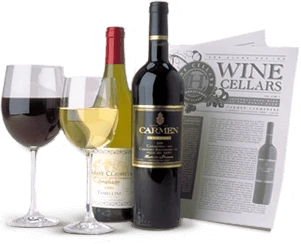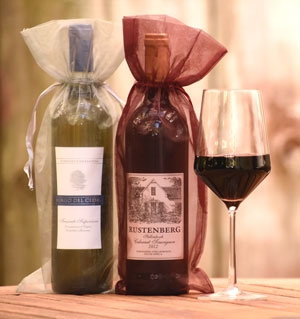As a traditionalist, Alfio Cavallotto’s Bricco Boschis Barolo nearly always offers Barolo aficionados one of the truest reflections of the muscular, deep down, traditional style of Barolo for which the village of Castiglione Falletto is renowned, and thankfully the 2003 Cavallotto Bricco Boschis does not disappoint; it lives up to its well-deserved reputation and more. Always one of the deepest hued wines of Barolo, the 2003 Bricco Boschis is nearly black in color and packed with flavor. Animalistic, flamboyant, almost wild when first opened, the 2003 Bricco Boschis morphs with requisite aeration into a majestic Barolo, offering up delicious scents of black cherry fruit, grilled herbs, menthol, spice, violets, and tar, all of which flow delectably from the wine’s heady aroma into its lush, deep down palate. In the mouth, one can feel the power and weight of Castiglione Falletto as the Bricco Boschis fills the senses and consumes the palate. Tannins woven with layers of fruit and subtle, complex flavors explode on the finish and linger in the mind as well as on the tongue to offer the promise of a long life and years of pleasurable drinking. However, make no mistake, the 2003 Bricco Boschis is already a masterpiece, but like all great Barolo it remains in its youth only a shadow of what it will ultimately become, if allowed to rest quietly in bottle for several more years. If opened now or over the next year or so, we suggest extended aeration. We recommend at least two hours in a decanter prior to consuming. Better still, open the wine in the morning and let it air until dinner for optimal enjoyment. Anticipated maturity: 2009-2015.
The complex, nuanced flavors and powerful structure of the 2003 Cavallotto Bricco Boschis Barolo, and all fine Barolo wines for that matter, make the case for serving “the wine of kings” with grand cuisine. Rarely does one sit around sipping Barolo, but consumed at table with traditional Piedmontese cooking replete with a wealth of savory sauces, one comes to easily appreciate the royal nature of Barolo. Risottos, made with authentic Arbio rice, are nearly always some of our favorite choices with Barolo. A whole chicken, mushroom, and truffle risotto, cooked very slowly and dashed with authentic balsamic vinegar from Modena makes for a heavenly match. Milk fed veal medallions, sautéed to perfection with butter and herbs, pair nicely, too, and offer excellent counterpoint to the wine’s strength and vigor. Less regional dishes also complement this wine. Crown Roast of pork, stuffed with bread, onion, and herb farce provides a savory treat. Marinated steaks and pork tenderloins offer tasty uncomplicated alternatives, too. In addition, Cavallotto’s Barolo offers one of the finest accompaniments to hard cheeses. Hunks of authentic Italian Parmesan or Provolone cheese pose no threat to this wine and offer a great way to finish a meal fit for a king.
Alfio Cavallotto is one of the bright new stars to emerge in Italy’s Piedmont. However, Cavallotto is neither new to the scene, nor are his wines indicative of the light, modern style of Barolo. Cavallotto is a real traditionalist, and his wines make few concessions to the contemporary predilection for technology over technique. Rather, it is this house’s penchant for making authentic, muscular, cask aged Barolos that reflect the great terroir of Castiglione Falletto that have caused Alfio Cavallotto’s star to rise. In short, the Cavallotto’s Bricco Boschis Barolo is one of the finest in the zone.
The Cavallotto estate uses only indigenous yeasts and long macerations to extract the fullest representation from each vineyard and wine it produces, and the results are sublime – age worthy Piedmontese treasures that are both structured and ultimately decadent. Cavallotto’s most compelling offerings emanate from his premier 10 acre vineyard known as Bricco Boschis. Both Barbera and Barolo emerge from this little gem. Production from this single vineyard cru is predictably small, rarely more than 2,100 cases.
Barolo: The King of Wines, and the Wine of Kings
Barolo has affectionately and appropriately been referred to as the “king of wines, and the wine of kings.” In a fine vintage such as 2003 and in the hands of a great winemaker, Barolo is unquestionably Italy’s most profound red wine, richly deserving of the many accolades that have been bestowed upon it.
Barolo is born on the Langhe Hills of Italy’s Piedmont, on steep craggy Alpine foothills that tumble out of nearby France and Switzerland. Barolo is the most masculine of Piedmont’s three great Nebbiolo based wines and the focal point in the region’s viticultural tiara. Gattinara and Barbaresco are the other two crown jewels. Although Gattinara, typically the lightest and most feminine of Piedmont’s great reds, and Barbaresco, sometimes referred to as a baby Barolo for its propensity for being lighter and easier to drink in its youth than its more stalwart neighbor, share the same noble Nebbiolo vine as Barolo, it is Barolo that possesses the pedigree to rule the viticultural roost. Barolo’s lineage dates back to the Middle Ages and by the mid 18th century Barolo had begun to evolve into its present form in the vicinity of Alba, a distinct Old World city that serves as the white truffle capital of Italy as well as Piedmont’s premier wine town.
Today, the limited production of Barolo generates from the huddled hills of two valleys, Serralunga and Barolo, and their five principal communities, all of which lie to the southwest of the city of Alba and are reputed to impart distinctive characteristics and traits to their respective progeny. The townships of Serralunga, Castiglione Falletto, and Monforte are situated in the Serralunga Valley and are reputed to produce the region’s most masculine, longest-lived Barolos. Meanwhile, Barolo and La Morra, from which the more “delicate” wines of the zone are said to flow, are part of the Barolo Valley. However, there are many exceptions and innumerable variations in Barolo on the same theme, and this does not even take into account the decades old debate in Barolo over the relative merits of the modern versus traditional styles of Barolo, which have as much to do with individual winemaking techniques as they do the amount and kind of barrel aging the wines receive. Happily, in the end, there is great Barolo fashioned in all five of the major townships, in both modern and traditional styles.

Enjoy Limited Production Estate
Bottled Wines
Discover limited production estate bottled wines such as Vergenoegd's internationally
acclaimed 2005 Cabernet Sauvignon, imported exclusively for our members.


